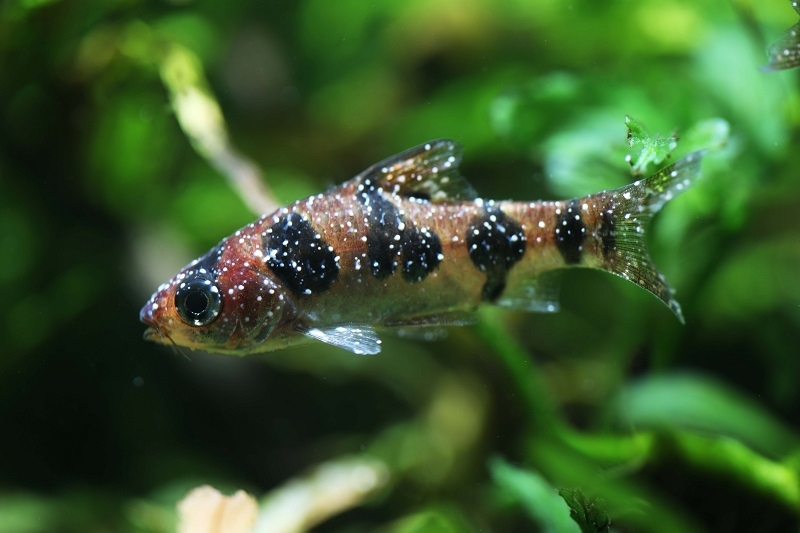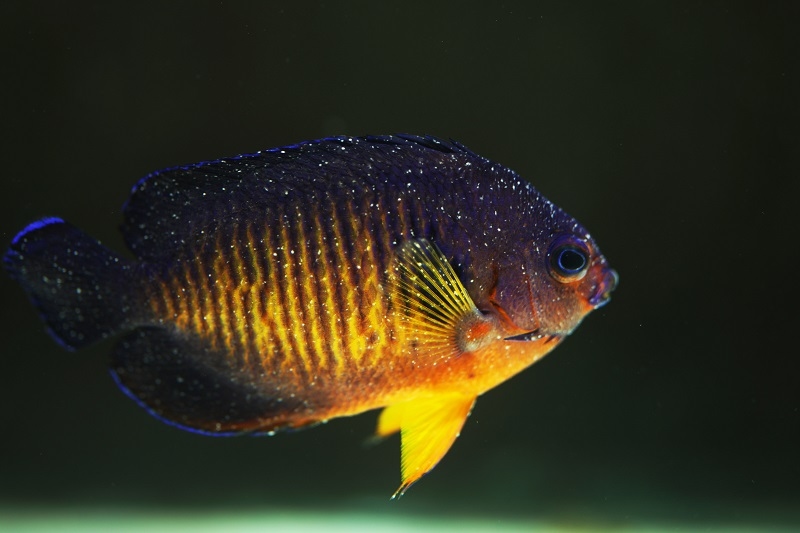
One of the most frequent issues that fish tank owners face is the occurrence of ich fish disease. The condition establishes rapidly, and if treatment is not carried out on time, it can kill the fish in your aquarium. Identifying the first signs and knowing what to do is the only way to save your fish.
This blog will provide you with detailed information about ich symptoms in goldfish, including causes, treatment, and prevention, so that you are able to take better care of the aquarium.
Ich fish disease, or white spot fish disease, is a parasitic infection caused by “Ichthyophthirius multifiliis”. This parasite lives in and around the skin, fins, and gills of freshwater fish. It also produces small white pustules on the fish's body that look like grains of salt or sugar.
The parasite flourishes when fish are stressed, water quality is poor, or a new fish is added to the tank without quarantine. Because the parasite has a complicated life cycle, it can reproduce very quickly, thus making it hard to contain the disease once it has spread.
The sooner ich is detected, the bigger the chances of the fish being saved. The most obvious indication is the presentation of the tiny white dots; however, there are other behaviors and physical changes that one needs to be aware of.
Besides that, the symptoms of goldfish consist of excessive mucus secretion and labored breathing.
The Ich parasite’s main life cycle has multiple stages. The first stage is the trophont which is directly connected to the fish thus the white cysts you can also see. When the trophont becomes mature, it detaches itself from the fish into the water and changes into a tomont that is a protective cover. The parasite then replicates into hundreds of theronts within the tomont, the latter being now free-swimming to infect the ones that they meet next.
This sequence makes it difficult to completely get rid of the parasite, as the treatments that are effective are only those done when the parasite is not attached. In other words, several rounds of treatment are always necessary because the cysts on the fish are protected from drugs. The fish may eventually die from over-infestation if the medications are not commenced on time.
Over a period of time, a number of conditions may make aquarium tanks more susceptible to the outbreak of fish ich disease. These include the following;
Ich treatment aquarium needs a lot of patience, regularity, and close control. The parasite is only killable in the free-swimming stage; thus, the treatments are prolonged, sometimes for several days to weeks.
By heating the water just a little, the parasite's life cycle is accelerated, and the treatments become more effective. Most aquarists reach 78–82°F for tropical fish temperature, but it is always recommended to check what is most suitable for your species.
One of the ways to reduce parasite numbers is by adding salt to the aquarium in certain amounts, which are controlled. However, not every type of fish can endure salt; hence, it is very important to do research before using this method.
There are special medications that are specifically designed for the treatment of ich in aquariums. The most common ones consist of malachite green, formalin, or copper. Follow the instructions carefully, as overdosing can not only harm the fish but also the good bacteria in your tank.
In the case that only a small number of fish are infected, transferring them to a hospital tank is the best solution because treatment can then be concentrated on them. Besides that, it also makes sure that the infection will not spread to other healthy fish.

There are treatments available, but it is always better to avoid the disease. Healthy aquariums with balanced environments are less likely to suffer from outbreaks.
These steps could be a great strategy for ich prevention freshwater tanks.
The method of infection and treatment can differ depending on the type of aquarium one has.
Every aquarium has its peculiarities that allow different treatment methods, but the main principles of cleanliness and careful observation are always the same.
Fishkeepers sometimes do things that they are not aware of, which causes outbreaks to grow bigger. Among such mistakes are:
To be effective, the right treatment should be a combination of correct medication, excellent water management, and patience.
When ich fish disease is diagnosed early, the fish will recover more easily than if it is identified later. Early detection means fewer parasites, less damage to the fish, and faster healing. Regular observation of your fish is the simplest way to catch symptoms before they spread.
If you see even a few white spots or if the fish behaves strangely, it is very important that you act immediately. The long wait will only lead to making the parasite spread and thus causing fish death, not that in small aquariums, the parasite population will become denser and will infest fish quickly.
Fish ich disease is a frequent health concern in home aquariums. However, if you know how to manage it properly, treatment can be very effective. Above all, prevention is the biggest weapon of any aquarist. In addition to visual recognition, quarantine and water stability are major factors in fish health.
Whether you have goldfish, tropical species, or a community tank, managing white spot disease in fish will prepare you if you encounter any fish that develop an unexpected outbreak.
This content was created by AI